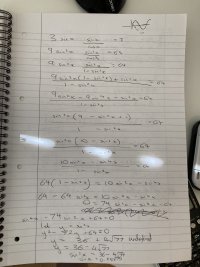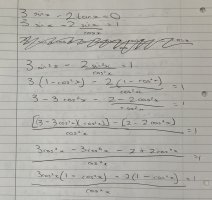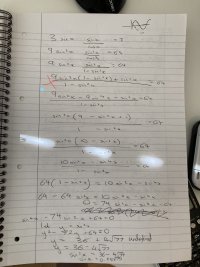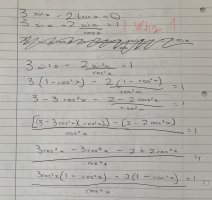lanaaaaaa8
New member
- Joined
- May 28, 2021
- Messages
- 2
Hello everyone,
I hope you’re all well today. I study A Level mathematics (roughly college level mathematics in the US) in the UK and I have some questions regarding trigonometric identities. I have basically been trying to figure out the answers to some solve questions and I am either unsure whether what I have done is correct ( the answers for this worksheet I am doing are extremely unclear), or I have got stuck and I am unsure how to proceed.
I have attached pictures of my work with the questions below. I have tried to put the question first and my subsequent working out in the next photo.
Please note that these questions are ‘solve’ questions.
I would be extremely grateful for any help, as I have been working on identities for a few days now and I am feeling quite disheartened at the number of questions I cannot seem to do.
Many thanks in advance.
I hope you’re all well today. I study A Level mathematics (roughly college level mathematics in the US) in the UK and I have some questions regarding trigonometric identities. I have basically been trying to figure out the answers to some solve questions and I am either unsure whether what I have done is correct ( the answers for this worksheet I am doing are extremely unclear), or I have got stuck and I am unsure how to proceed.
I have attached pictures of my work with the questions below. I have tried to put the question first and my subsequent working out in the next photo.
Please note that these questions are ‘solve’ questions.
I would be extremely grateful for any help, as I have been working on identities for a few days now and I am feeling quite disheartened at the number of questions I cannot seem to do.
Many thanks in advance.





